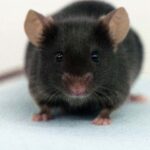In the past decade, the first cases of respiratory tract infection caused by bat-borne Pteropine ortheovirus (PRV) have been reporting in humans. To help shed light on the clinical course of PRV infection, researchers reporting in PLOS Neglected Tropical Diseases have now used a mouse model of the infection to study its virulence, pathology and pathogenesis.
PRV has been isolated from patients and fruit bats in Southeast Asia and is believed to cause acute respiratory tract infection (RTI) in humans. Patients testing positive for PRV have presented with symptoms of fever, cough, sore throat, abdominal pain, diarrhea, and vomiting. Antibodies to PRV have been detected in people throughout Malaysia and Vietnam, suggesting the prevalence of human PRV infection may be higher than previously thought.
In the new work, Masayuki Saiko, of the Gifu University in Japan, and colleagues used two strains of PRV that had been isolated in previous studies–PRV-MB from a patient who imported PRV from Japan to Bali in 2007 and PRV-Samal-24 from a bat in the Philippines in 2013. The researchers infected mice with each strain of PRV and followed the resulting infection at both a cellular and organismal level.
The intranasal inoculation of mice with either PRV-MB or PRV-Samal-24 caused respiratory infection and the study showed that the lung was the principle target organ of PRV replication. When mice were treated with a non-lethal dose of PRV, they were protected against lethal PRV infection. And when they were treated with antiserum immediately after receiving a normally-lethal dose of the virus, fatalities were reduced.
“This model might be useful for analyzing the pathogenicity of PRV in mice and for evaluating the efficacy of vaccines and therapeutic agents that will be developed to prevent and treat PRV infection,” the researchers say. “This model is also useful for further studies on PRV infection in vivo.”
Research article: Virulence, pathology, and pathogenesis of Pteropine orthoreovirus (PRV) in BALB/c mice: Development of an animal infection model for PRV

